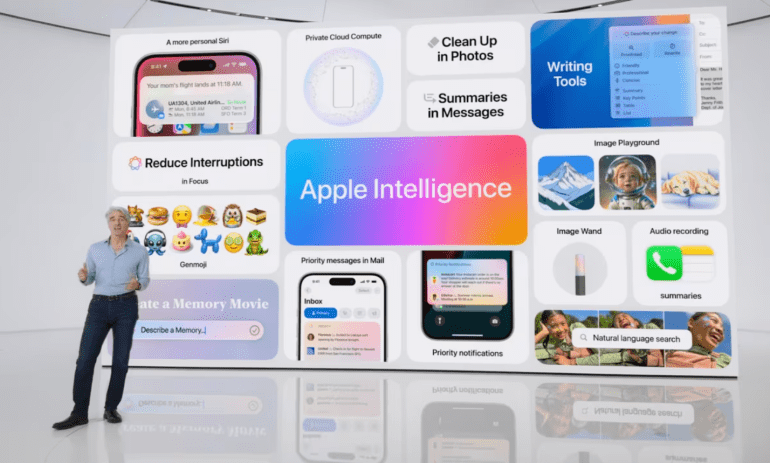- Apple’s new AI initiatives announced at WWDC, including Siri overhaul and Apple Intelligence system, starting 2024.
- Only iPhone 15 Pro and 15 Pro Max models will support the new AI capabilities, impacting less than 7% of all iPhone users.
- AI enhancements are initially limited to U.S. English, excluding a significant portion of global users.
- Other iPhone models and older devices won’t access the new AI functions or the improved Siri features.
- The AI advancements will extend to some Apple processors in iPads and Macs but not to Apple’s newer mixed reality glasses.
- Limited rollout and language support have disappointed tech analysts and enthusiasts.
Main AI News:
Apple’s latest development in artificial intelligence significantly narrows its reach, affecting a majority of its iPhone user base. Announced by CEO Tim Cook at the Worldwide Developer Conference (WWDC), this innovative leap forward will be restricted to owners of the most recent models, the iPhone 15 Pro and 15 Pro Max, starting in 2024, and will initially support only U.S. English.
The much-anticipated overhaul of Siri and the debut of the Apple Intelligence system are set to launch with the new iOS 18 this fall, but these advancements will be inaccessible to over 90% of the estimated 1.5 billion iPhone users worldwide. Market analysts have projected that the iPhone 15 Pro and Pro Max models, considered the world’s top-selling smartphones, could account for nearly 100 million units. This leaves a stark 93% of Apple’s global smartphone user base without access to these new AI capabilities. Furthermore, the exclusivity extends beyond just model and language limitations, with services only being available to those within the U.S.
Only the iPhone 15 Pro and Pro Max, out of 24 models that will support the upcoming iOS 18, will be compatible with Apple Intelligence. This system will offer a suite of sophisticated functions, from summarizing documents, notes, audios, and phone calls to suggesting replies to messages, reviewing and editing text for style and tone. It will also introduce new features like creating custom emojis and images from simple commands. However, other iPhone models will lack access to these innovative functions and the enhanced Siri, which promises to improve conversational understanding and interface more effectively with other digital services.
Beyond mobile phones, the cutting-edge AI and Siri improvements will also extend to tablets and computers equipped with Apple processors—benefitting only a select few iPad and Mac models. Notably, devices like the Vision Pro mixed reality glasses, despite their advanced capabilities and recent introduction, will not receive these AI enhancements in the foreseeable future.
This strategic decision has led to a significant letdown among tech enthusiasts and analysts, particularly because of the limited initial rollout and language support. The company has not disclosed whether older models of various platforms will gain access to some of these AI features in the future, either through hardware compatibility or via Apple’s private cloud computing network, which was launched to handle sophisticated generative AI tasks. There is also no detailed information on when these features will become available in other languages, leaving many international users in limbo. Apple has only stated that Apple Intelligence “will be available in beta as part of iOS 18, iPadOS 18, and macOS Sequoia this fall in U.S. English, with some features, software platforms, and additional languages expected to roll out over the next year.” The exclusion of the revamped Siri from smartwatches, smart speakers, and Apple TV has also disappointed many, highlighting the limitations in Apple’s current AI strategy.
Conclusion:
Apple’s decision to limit its latest AI advancements to only the newest iPhone models and U.S. English speakers represents a strategic move to drive hardware upgrades among its user base, while also setting the stage for a high-end, premium user experience. This approach, however, may alienate a large segment of its global market, potentially slowing broader adoption rates of its newest technology. For the market, this indicates a continued trend towards segmentation, where premium features become increasingly exclusive, possibly affecting Apple’s brand accessibility and consumer satisfaction in diverse international markets.

